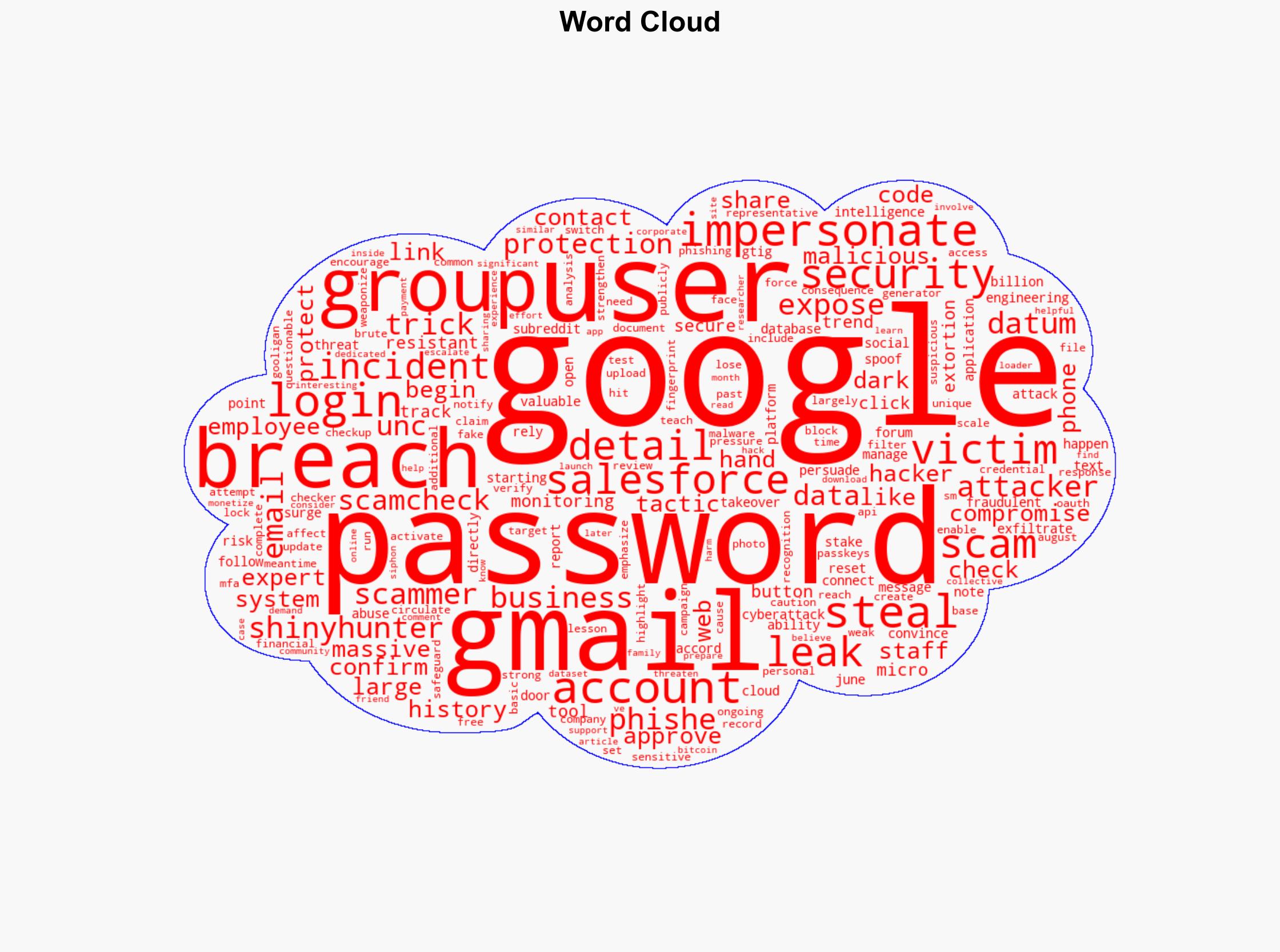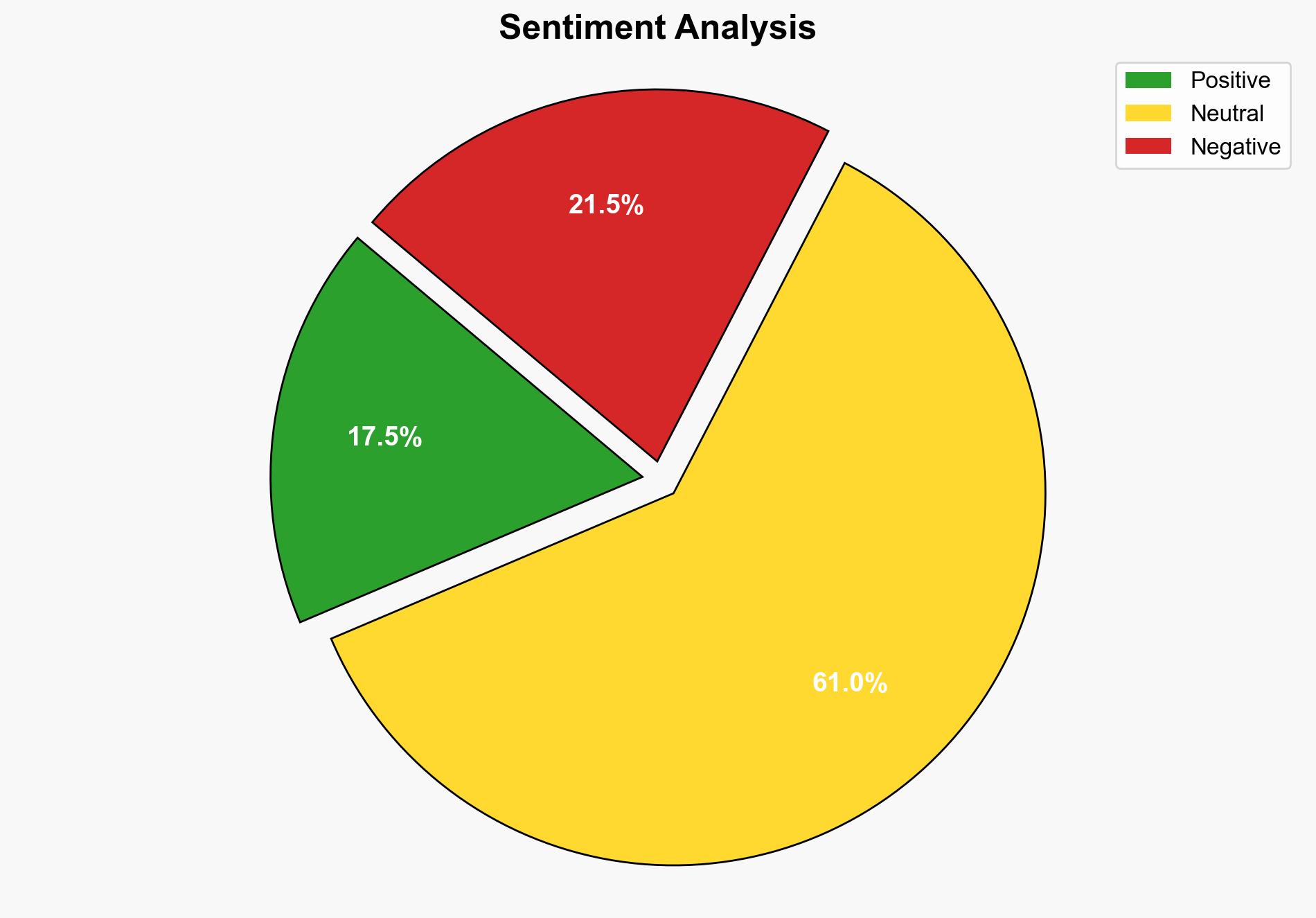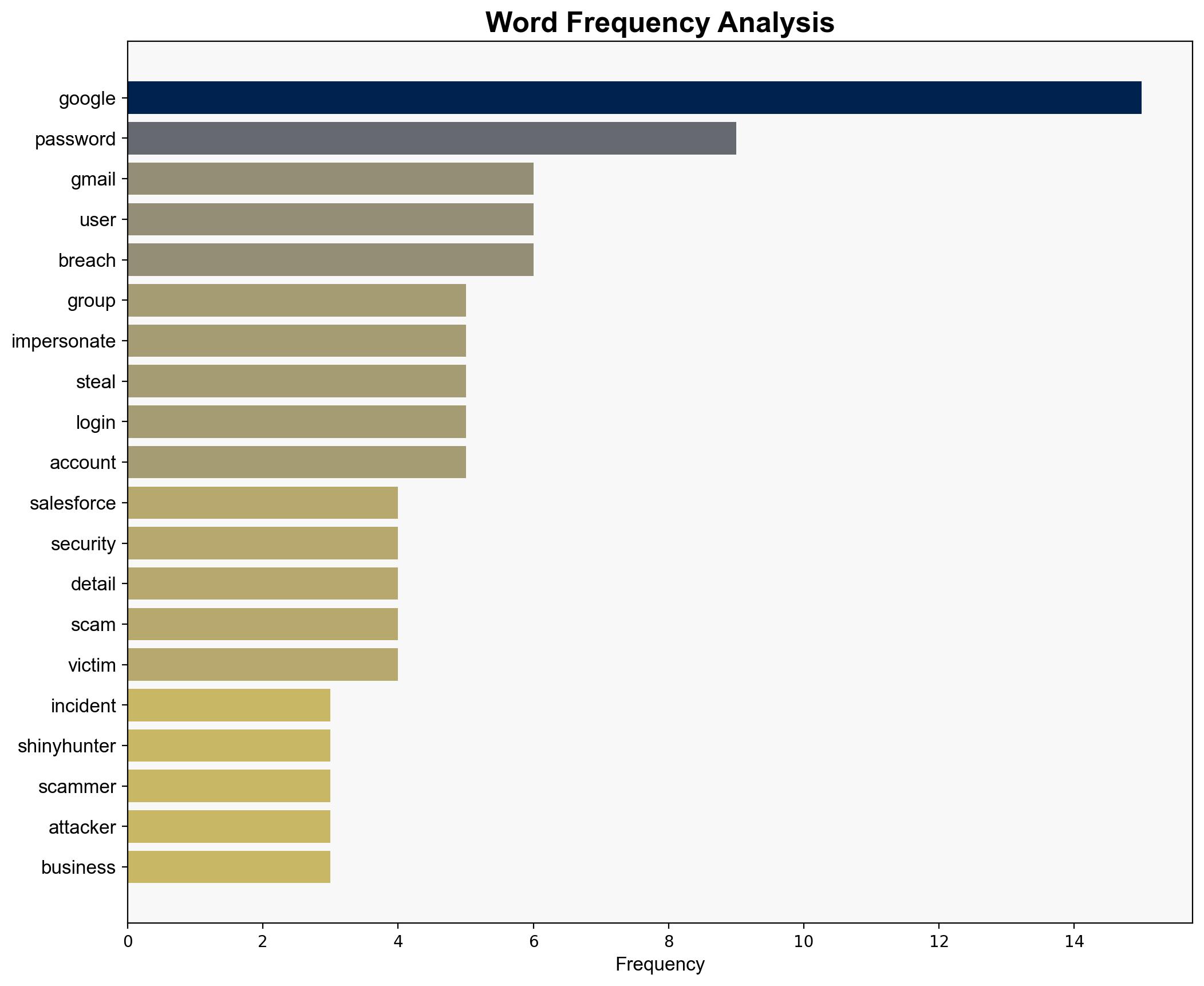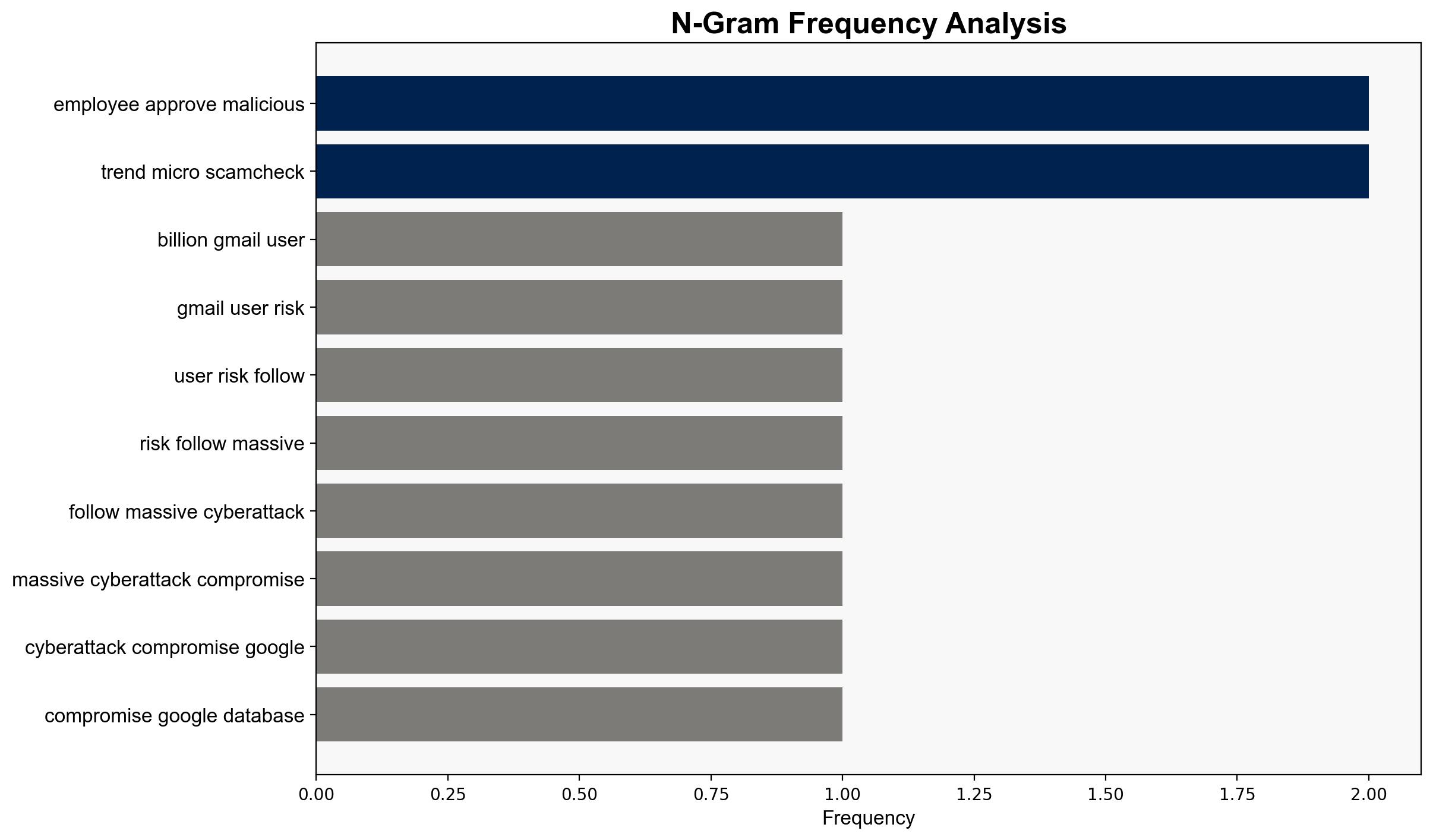Google Data Breach Exposes 25 Billion Gmail Users to New Scam Risks Trend Micro News – Trendmicro.com
Published on: 2025-08-28
Intelligence Report: Google Data Breach Exposes 25 Billion Gmail Users to New Scam Risks Trend Micro News – Trendmicro.com
1. BLUF (Bottom Line Up Front)
The most supported hypothesis is that the breach primarily aims to facilitate targeted scams through social engineering rather than direct financial theft. Confidence level: Moderate. Recommended action: Enhance user awareness and implement robust security protocols, including multi-factor authentication and regular security audits.
2. Competing Hypotheses
1. **Hypothesis A**: The breach is primarily intended to enable large-scale social engineering attacks, leveraging stolen data to impersonate Google representatives and trick users into divulging sensitive information.
2. **Hypothesis B**: The breach is a precursor to a more extensive financial fraud operation, with the initial data theft serving as a means to gain access to more valuable financial information.
Using ACH 2.0, Hypothesis A is better supported due to the emphasis on social engineering tactics and the lack of direct evidence of financial data theft. The breach’s focus on impersonation and phishing aligns with this hypothesis.
3. Key Assumptions and Red Flags
– **Assumptions**: It is assumed that the attackers’ primary goal is not immediate financial gain but rather the setup for future scams. Another assumption is that the breach did not directly compromise passwords.
– **Red Flags**: The claim of 25 billion users is inconsistent with known Gmail user statistics, suggesting possible exaggeration. The absence of direct financial data theft reports is a notable gap.
– **Blind Spots**: Limited information on the attackers’ end goals and the full scope of data compromised.
4. Implications and Strategic Risks
The breach could lead to a surge in phishing attacks, undermining user trust in digital communications. Economically, businesses relying on Gmail for communication may face disruptions. Psychologically, users may experience increased anxiety over digital security. The breach could escalate if attackers leverage stolen data for more sophisticated scams or extortion.
5. Recommendations and Outlook
- **Immediate Actions**: Conduct a comprehensive security audit of Google’s systems and inform users of potential risks. Encourage users to update passwords and enable multi-factor authentication.
- **Scenario Projections**:
– **Best Case**: Enhanced security measures prevent further breaches, and user education mitigates scam risks.
– **Worst Case**: Attackers successfully exploit the breach for large-scale financial fraud and extortion.
– **Most Likely**: Increased phishing attempts and scams targeting Gmail users, with moderate success in data exploitation.
6. Key Individuals and Entities
– **ShinyHunter**: Hacker group linked to the breach, known for social engineering and extortion tactics.
– **Google Threat Intelligence Group (GTIG)**: Involved in assessing and responding to the breach.
7. Thematic Tags
national security threats, cybersecurity, counter-terrorism, regional focus




